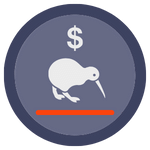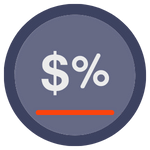An introduction to KiwiSaver
Our guide to KiwiSaver explains how it works, including contributions, withdrawals, savings suspensions, and how to choose the right fund.

The breakdown
- KiwiSaver is a government-supported savings scheme designed to support New Zealanders saver for retirement.
- Your employer matches your KiwiSaver contributions (typically up to 3%, but sometimes more). The government also contributes to your fund.
- When comparing KiwiSaver funds, remember to look at fund risk type, fees, and past performance.
Author: Kevin McHugh, Head of Publishing at Banked.
What is KiwiSaver?

KiwiSaver is a government-supported savings scheme designed to help people save for retirement. The scheme was introduced in July 2007 and it currently has around 3.26 million members (according to a 2023 report from the Financial Markets Authority).
Joining KiwiSaver is not mandatory, but due to the benefits it offers, it is recommended. KiwiSaver is work based, and if you do choose to join the KiwiSaver scheme, you must commit part of your salary with each paycheck.
Your employer must legally match your contributions (minimum 3%) while the government will also match your contributions up to a maximum of $521.43. These contributions mean that if you don’t choose to participate in the KiwiSaver scheme, you are effectively missing out on “free money”.
How do contributions work?
When you sign up to KiwiSaver you must choose how much of your before-tax salary you wish to contribute. You can contribute either 3%, 4%, 6%, 8%, or 10%. Once this is set, it is automatically deducted from each paycheck and there is nothing further for you to do.
You can change your contribution rate amount at any time by informing your employer or your KiwiSaver provider. You can also change your rate with the IRD by logging into MyIRD. If you take this option, IRD will inform your employer of the rate change on your behalf.
Your employer must match your contribution but how much they will match depends on the employer. The minimum they must match is 3%, which is the most common amount, but some more generous employers will match 4% or more. The employer’s contribution is also automatic and you will see it noted in your regular payslip.
Finally, the government also makes a yearly contribution to your KiwiSaver of up to $521.43. To earn this government contribution, you must make your own KiwiSaver contribution of at least $1042.86 each year between 1 July to 30 June.
Can I opt out of KiwiSaver?
You do not have to join a KiwiSaver scheme at any point in your life, but if you join you cannot opt out at a later date.
However, there are a few exceptions in which you can opt out:
- You have been automatically enrolled in a KiwiSaver scheme by your employer but you don’t want to join. In this instance, you can opt out as long as you do so before day 56 (the end of week 8) of starting work.
- Late opt outs. You may still be able to opt out up to 3 months after you make your first KiwiSaver contribution under certain conditions. These include:
your employer did not give you a KiwiSaver employee information pack when you started- you did not receive a product disclosure statement for the KiwiSaver scheme
- you were not able to opt out in time due to circumstances outside of your control
- you should not have been enrolled in the first place.
- You are under 19 years old. You may be able to opt out if your employer incorrectly enrolled you before you turned 18 (including if your parent or guardian did not give consent).
Learn more about opting out on the Inland Revenue website.
Can I withdraw money from my KiwiSaver?
Your KiwiSaver funds are locked away until you turn 65, but there are some exceptional circumstances in which you can withdraw them before that point. We look at each of them here.
You’re buying your first home
If you have been contributing to KiwiSaver for at least 3 years, you may be able to use some or all of it to buy your first home.
Other requirements include:
- the home must be in New Zealand
- you have not owned a home or land before (although some exceptions apply)
- you intend to live in the home you’re buying (you can’t buy it for the purposes of renting it out).
- you haven’t withdrawn money to buy a first home before.
Contact your KiwiSaver scheme provider if you want to discuss making a withdrawal for a first home.
You’re facing significant financial hardship
You can also withdraw from your KiwiSaver if you can demonstrate that you are undergoing significant financial hardship.
You may qualify for this if you cannot meet your minimum living expenses, cannot meet your mortgage payments, have a serious illness, or need to pay for medical treatment (either for yourself or a dependent family member. You may also be able to make a withdrawal if you need to pay for the funeral of a family member.
If you want to withdraw from your KiwiSaver for reasons of financial hardship, contact your scheme provider.
You’re moving permanently overseas
It’s also possible to withdraw your KiwiSaver funds if you are moving abroad for good.
In this instance, you can withdraw almost all of your funds. However, you will not be able to withdraw the amount that the New Zealand government has contributed. You can also apply to have your KiwiSaver savings transferred to an approved superannuation scheme in another country.
To withdraw your KiwiSaver, you must have been living abroad for a year. To do so, you must contact your scheme provider.
If you are moving to Australia, you cannot withdraw your KiwiSaver — you only have the option to transfer it to an eligible Australian superannuation scheme.
Other reasons
There are some other circumstances in which you may be able to withdraw your KiwiSaver savings. These include:
- Health reasons: You have an illness, injury, or disability that either impacts your ability to work or poses a risk of death. This also applies if you have a condition that lowers your life expectancy below 65 years of age.
- Bankruptcy: You may be able to access your KiwiSaver to pay off debts if you become bankrupt.
Savings suspensions explained
While you cannot opt out of your KiwiSaver scheme (unless in exceptional circumstances), you can take a savings break (or suspension).
If you have been contributing to KiwiSaver for a year or more, you do not have to give a reason for taking a savings break and you can take as many savings breaks as you need. Savings breaks can be as short as 3 months or as long as 1 year and you can even take breaks back to back.
However, things are a little different if you’ve been contributing to your KiwiSaver for less than a year. In this situation, you can only take a savings break if you are experiencing financial hardship (which you will need to prove to the IRD).
How to choose the right KiwiSaver fund
There are a number of factors to consider when choosing a KiwiSaver fund for the first time. The same applies if you are looking to change fund.
The fund type and its previous performance
KiwiSaver funds can be generally categorised into 5 types:
- Defensive
- Conservative
- Balanced
- Growth
- Aggressive
As the names suggest, the return you can hope to earn increases from defensive to aggressive. However, the risk involved increases also.
As a result, it is suggested that the more aggressive (and higher risk) a fund is, the longer it is advised that you invest before considering changing (or withdrawing). This is because higher-risk funds are more susceptible to greater ups and downs than more conservative funds and it will likely take longer for those to pan out to the overall return on investment you would hope for.
It can also be helpful to look at the past performance of any fund you’re considering. Strong past performance does not mean the fund will perform well in the future, but it can give you confidence that a scheme provider has been successful in the past.
Fees
It may be easy to overlook, but the fees a scheme provider charges should be a central part of your decision.
All scheme providers charge fees for managing your KiwiSaver fund. It goes without saying that the lower the fees the better, but just how important that is can’t be overstated.
Sometimes the difference in fees between different scheme providers and the funds they offer may seem small, they may amount to tens of thousands of dollars over the entire life of your KiwiSaver.
In this respect, it is worth including Simplicity in your consideration as it is a non-profit and so is committed to keeping fees as low as possible for its users.
Customer support and communication
Different KiwiSaver providers offer different levels of support and advice. This service can be important in ensuring you can make the right choice regarding your fund and that you’re getting the best value for money.
When comparing funds, fees and the level of service offered by each KiwiSave Fund provider, we recommend you check out Sorted’s Fund Finder tool which can help you assess funds and providers by each of these criteria.




